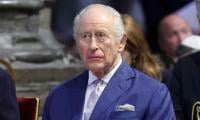KARACHI: Pakistan’s October trade deficit widened by 109 percent to reach $3.775 billion against $1.803 billion during the same month last year, as imports increased more than threefold despite heavy regulatory duties and 100 percent cash margin on 114 import items.
The country’s exports grew 17.5 percent year-on-year to $2.471 billion in October 2021, compared with $2.104 billion in October 2020.
Imports increased 60 percent to $6.247 billion during the month, despite currency depreciation of 0.69 percent during October. The rupee has shed 7.49 percent versus the dollar so far this year. It slumped 11.86 percent since its recent peak in May, and down 8.82 percent during the fiscal year till date.
This did have some positive impact compared to September 2021, as the balance of trade has improved by 10 percent. Last month, the trade deficit was $4.185 billion.
Depreciation was also a boon for exporters, whose products were cheaper for foreign customers and they were able to access more rupees in exchange.
Adviser to Prime Minister for Commerce and Investment called the 17.5 percent increase in October a historic high record for the month. “This is the highest ever export in any October.”
The country had targeted to earn $2.6 billion from exports in October 2021, the adviser said via his social media account on Twitter.
For the July-October 2021 period, Pakistan’s exports grew 25 percent to $9.468 billion as compared to $7.576 billion during July-October 2020. “Our target for July-October 2021 was $9.6 billion,” the PM’s adviser said.
Meanwhile, the country’s imports jumped up 64 percent to $24.99 billion during July-October 2021 compared to $15.19 billion during the same period in 2020.
The adviser said that about 40 percent of this increase was investment-driven (capital goods, raw material and intermediates), which indicates expansion of industry and enhanced activity by industry.
The remaining 60 percent of imports comprised petroleum, coal and gas (34 percent), vaccines 11 percent, food (8 percent), consumer goods (2 percent) and all others (5 percent).
Most of these imports were “inelastic in nature”, the adviser said. In absolute terms, the net increase in imports over this period was $9.801 billion.
Of this, consumer goods were $239 million, food $823 million, capital goods $1,620 million, raw material and intermediates $2,209 million, petroleum, coal and gas $3,364 million, vaccines $1,068 million and all others $478 million.
Fahad Rauf of Ismail Iqbal Securities said trade deficit was down 10 percent month-on-month, but imports were still high at $6.2 billion, “especially without any material vaccine imports ($1.1 billion in four months, which is roughly same as Q1”.















